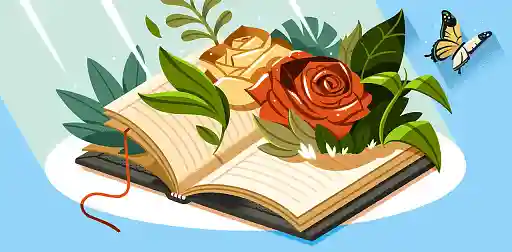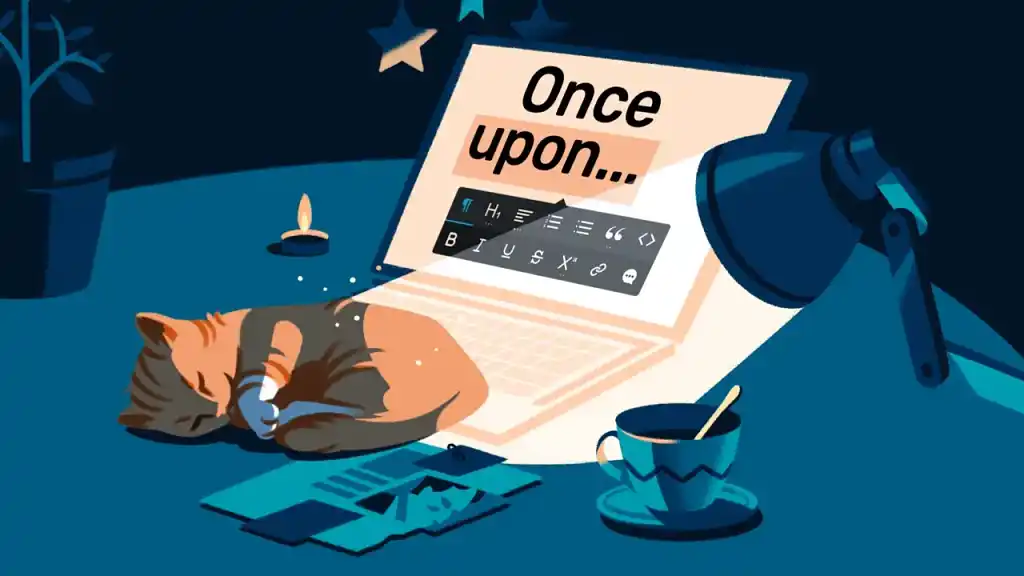Posted on Jun 16, 2025
Figurative Language: Types, Examples, and How to Use It
Linnea Gradin
The editor-in-chief of the Reedsy Freelancer blog, Linnea is a writer and marketer with a degree from the University of Cambridge. Her focus is to provide aspiring editors and book designers with the resources to further their careers.
View profile →Savannah Cordova
Savannah is a senior editor with Reedsy and a published writer whose work has appeared on Slate, Kirkus, and BookTrib. Her short fiction has appeared in the Owl Canyon Press anthology, "No Bars and a Dead Battery".
View profile →You’ve probably heard of figurative language before, but what exactly is it and how does it work? Simply put, figurative language is a catch-all phrase for any literary device that uses images to convey meaning. This contrasts with literal language, which states things exactly as they are. Authors use figurative language to express emotions, ideas, and perspectives more creatively.
In this guide, we’ll break down some common types of figurative language and look at examples from literature. We’ll also give some advice on how to apply it to your own writing to make it truly sing.
Let’s dive in.
What is figurative language?
Figurative language is when you use words and phrases to imply something that goes beyond their literal definition. It’s primarily used in fiction and creative writing, adding depth, emotion, and artistry to a text.
Saying that a text will “truly sing” or inviting the reader to “dive in,” for instance — as we’ve done above — are both examples of figurative language. Texts can’t actually sing, and readers can’t literally dive into one, but each of these expressions creates a vivid image. A text that “sings” feels alive and captures the reader’s attention, whereas “diving” into a text suggests you’re going to immerse yourself in it completely.
Q: What are the most common craft mistakes new authors make?
Suggested answer
One of the biggest mistakes I see from new authors is that they finish writing their manuscript and then they think they are done and ready for an editor to go through and review.
Writers need to be their own editors first. Because there are so many potential new authors every day, it's imperative that writers go back and edit their work thoroughly. That means reading, and rereading what they've written to understand how their characters develop through their novel, or how the topics that they brought up in chapter two are refined and built upon in chapter nine. Through that reading process, writers should be editing their work as they find pieces that aren't strong enough or need to be altered to make a better overall manuscript.
Matt is available to hire on Reedsy ⏺
The most common writing mistake I see from first-time authors is cramming too much into the first chapter. Your first chapter is a meet and greet, where you establish credibility, likability, and optimism that the book is worth the reader's time. Hook the reader, show your personality, but don't dump all your knowledge on them at the beginning of the book. Take them on an interesting, helpful journey,
Mike is available to hire on Reedsy ⏺
Besides expressions like these, there are many other kinds of figurative language: metaphors, similes, allusions, personification, and so on. We’ll take a closer look at these in a minute — but first, let’s look at why understanding and mastering figurative language is so important.
Why should you use figurative language?
Figurative language is not just a tool that helps authors express themselves in more creative ways. It is a fundamental part of how we express ourselves (in fact, according to author James Geary, communication may even be impossible without it) as it allows you to capture feelings and ideas that are otherwise hard to describe — like love, regret, the passing of time, and what it means to be free, to name just a few.
Evocative imagery, metaphors, and other types of figurative language is so powerful because it helps you engage your audience's imagination as well as their logic. As such, it is part and parcel of the classic storytelling technique “show, don’t tell.” It elevates your writing from purely factual to genuinely compelling. That's why you'll often see it used in everything from advertisements, creative writing, poems, and speeches — as well as everyday conversation.
Want to learn more about showing, not telling? Check out this course:

FREE COURSE
Show, Don't Tell
Master the golden rule of writing in 10 five-minute lessons.
So, what might figurative language look like?
7 common types of figurative language
Figurative language comes in many forms, each serving its own purpose in writing. Let’s take a closer look at some of the most common types:
Metaphor
A metaphor says that one thing is another, suggesting they are alike in some way. This comparison isn't literal, but helps convey a deeper meaning or insight. It can either be a straightforward 1:1 comparison, or an extended metaphor, which draws more elaborate parallels between two or more concepts.
⏰ Example: “Time is a thief.”
In this metaphor, time doesn’t literally come into your house and steal from you. Rather, it is compared to a thief to express how it takes away moments or opportunities when we’re not paying attention. The metaphor adds a sense of urgency and loss to the idea of time.
To extend the metaphor, you’d simply continue the comparison: “Time is a thief. It catches you off your guard, siphons away opportunities bit by bit, and offers no returns.”
Q: What lessons can first-time authors gain from analyzing popular books in their chosen genre?
Suggested answer
Analysing popular books in your chosen genre will help you in two ways. Firstly, you can learn from the choices and tactics used by those authors. Secondly, you can see how your proposed book fits into the market.
Susanna is available to hire on Reedsy ⏺
Look for the balance between narration and dialogue. Watch how and when authors introduce new characters. Look for how visual and sensory details are woven into the story as it goes along, and how the author doesn't stop for long to weave in these details.
Look for the initial inciting incident and pay attention to where it falls in the book. Watch for how much happens in the first 50 pages, and see if the plotting of your own book moves along at a similar pace.
Look at those all-important first lines and first chapters of a book and see if you can glean knowledge as to why the author chose to open with that sentence or paragraph.
Melody is available to hire on Reedsy ⏺
Simile
A simile, like a metaphor, also compares two things — but a simile uses words such as “like” or “as” to highlight the similarities. This type of figurative language is often used to make descriptions more relatable or vivid.
☀️ Example: “Her smile was as bright as the sun.”
This simile compares the brightness of a smile to the sun, emphasizing how radiant and joyful the smile is. It would obviously be impossible for a grin to be as bright as the sun (we’d all burn to a crisp if that were true), but this comparison manages to convey just how radiant the smile is.
Personification
Personification gives human characteristics to non-human objects, animals, or abstract concepts. This helps bring inanimate things to life, giving them agency and story-driving potential. By using this technique, authors can explore concepts that go beyond real world logic, but which still hold significance to the human experience.
🤖 Example: “The wind whispered through the trees.”
Q: What techniques can authors use to personify nature and make it feel like an active character in their story?
Suggested answer
Write it so it feels like it has agency of its own—not like it actually does, but just so it feels like if it wanted to exert some form of will on the human characters, it could. That's a little nebulous, I know, but it's neither an easy thing to do nor describe. 🙂
Brett is available to hire on Reedsy ⏺
Here, the wind is given the human ability to whisper. This suggests a quiet, soft movement that creates an intimate atmosphere. It may even add a hint of magic to the narrative.
Hyperbole
Hyperbole is an exaggeration used for emphasis or effect. It's often used to highlight something important or to create a strong emotional response in the reader, drawing attention to the disproportionate description.
🐴 Example: “I’m so hungry I could eat a horse.”
This over-the-top statement emphasizes extreme hunger, though it’s clearly not meant to imply that horse is on the menu!
Allusion
An allusion is a reference to another work of literature, a historical event, or a well-known figure or idea. It adds layers of meaning by drawing connections between the current text and something the reader is already familiar with.
🎭 Example: “He was a real Romeo with the ladies.”
Obviously referring to Shakespeare’s Romeo and Juliet, this allusion instantly conveys that the person is a charmer, much like the passionate and romantic Romeo Montague.
Idiom
An idiom is a set phrase or expression whose meaning is often specific to a culture or language. Often, idioms are puzzling if taken literally (especially for non-native speakers).
🐈 Example: “It’s raining cats and dogs.”
Q: What techniques can writers use to maintain a consistent and effective tone throughout their piece?
Suggested answer
Tone is an aspect I look carefully at when working on a manuscript. It's easy to get wrong. It often boils down to knowing precisely what your story is. Genre and tone go hand in hand.
Perhaps a clear example of a muddled or uncertain tone can be found with the use of humour in a novel. I've read quite a lot of manuscripts that deal with dark subject matter, but also include random toilet humour. This tends to create a clash in tone. My note on toilet humour is often "Why have you included this? Does it work?" Gallows humour can work in a serious and dark story, but fart jokes? Probably not. Also consider carefully your characters: what do they find funny? What sort of jokes do they tell? Is humour something they fall back on in life, especially during the dark times? What underlying emotional need is met by humour? This knowledge and understanding applies also to your narrator - who are they? What amuses them? Do they tell jokes? Do they make fun of the characters (a la Jane Austen)?
Watching films can help us to understand tone and what is contributes to a story. The filter of tone is played out on screen for us to observe. Blade Runner, for instance - it's always dark, and raining, and generally bleak, menacing, and miserable. Barbie - bright, colourful, artificial, and fake. Schindler's List - shot in black and white, which adds greatly to the overall tone. Also note the humour in this film. It's present, and needs to be, because it is such a dark film, and the viewer needs the light relief. But the humour is well-matched to the tone - quite dark, and often based on the clash of personalities of Schindler and Stern. Think also about the soundtrack of a film - the music tends to match the overall mood, or tone, of the story. The famous Jaws soundtrack, for example. Who can forget that? And it matches perfectly the unsettling tone of the story.
Tone is really a filter through which a writer tells their story, and the writer is, or needs to be, in full control of that. Novelists don't have the tools that film-makers have, so tone is created only by the words on the page. It all boils down to control - and knowing your story and your characters inside out is the foundation. A well-controlled tone is always something to aim for when writing, and if it's present, for me as an editor, it's a great sign - it means the writer knows their story, their genre, their characters, and even their reader. It's wise, indeed vital, to understand the tone you are hoping to create, and work towards this throughout the writing and editing process.
Louise is available to hire on Reedsy ⏺
Make sure the tone is what you want at the outset. Then use this as a guide every time you sit down to write more material. You don't need to read everything that has been written so far, but even re-reading the opening or a page or two of what was written the day before or during the last writing session can help to bring that "voice" and "tone" to mind, so that particular tone can be continued.
Melody is available to hire on Reedsy ⏺
This idiom is used to describe heavy rain. While it doesn’t mean animals are actually falling from the sky, it effectively conveys the intensity of the weather.
Oxymoron
An oxymoron is a figure of speech in which two contradictory terms are paired together.
❄️ Example: “Deafening silence.”
Here, “deafening” and “silence” are opposites, but when combined, they evoke the profound, almost suffocating stillness of a moment.
These are just a few of the many types of figurative language that can add depth to your writing.
Check out this post on 100 literary devices for more examples.
In the next section, we’ll take an in-depth look at how three different authors have applied figurative language in some of their most famous works.
Examples of figurative language in literature
Figurative language is all around us — and it’s a huge part of some of the most beloved stories in the canon. Let’s see what that might look like in context.
1. Metaphor in As You Like It by Shakespeare
Shakespeare was a master of figurative language, so what better place to start than with his play As You Like It and this famous line:
“All the world’s a stage, and all the men and women merely players.”
With this metaphor, Shakespeare is trying to capture a universal human experience: that we all perform our expected roles in front of each other. Taken further, he may even be suggesting that we are preordained to fulfill our destinies, just like actors must stick to their scripts onstage.
Instead of outright saying “it doesn’t matter what we do because our fate is already decided,” Shakespeare uses this figurative language to add layers to his writing. This in turn inspires the reader (or audience member) to think deeply about what that metaphor truly means. They can interpret it in many different ways, whereas more literal writing limits the scope of possibility.
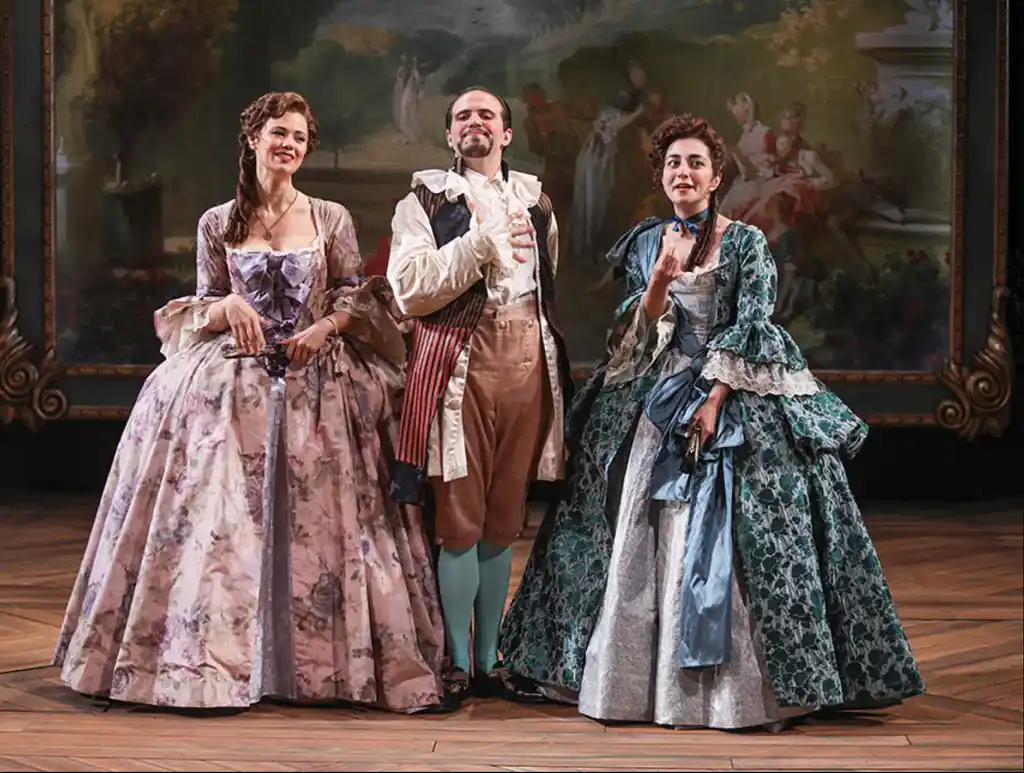
2. Personification in Animal Farm by George Orwell
Figurative language can be used in single sentences when you want to add a bit of flair. However, some of the most effective use of figurative language gradually build more complex images and motifs throughout their story to capture a theme.
In Animal Farm, for instance, George Orwell uses personification — letting farm animals have greater sentience and the ability to speak — throughout the entire novel. This personification helps convey Orwell’s social and political critiques of totalitarianism and the corruptive effect of power. Bringing farm animals to life to represent real-life political figures also makes the tone of the novel both deeply ironic and sharply critical, keeping the story accessible and entertaining to the reader.
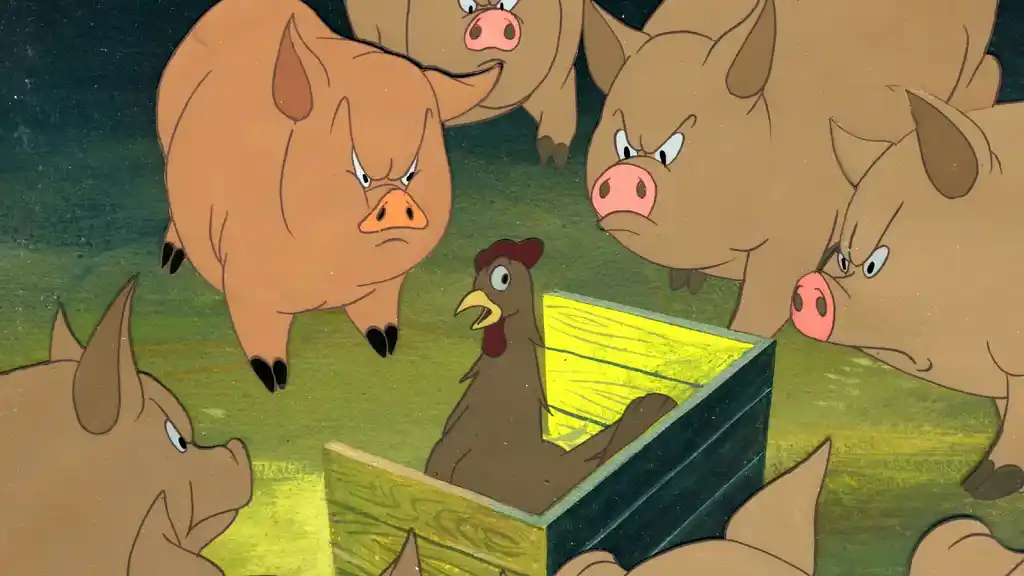
3. Hyperbole in The Vegetarian by Han Kang
In The Vegetarian, author Han Kang uses many different forms of figurative language to explore the inner conflicts of her characters — especially the protagonist, Yeong-hye, who has decided to stop eating meat.
Yeong-hye’s refusal to eat meat, which she sees as an act of personal liberation, is met with the disapproval of her family and society. Her avoidance reaches a point where she becomes obsessed with the purity of her food, refusing to eat anything faintly associated with cruelty towards animals.
Q: What advice would you give to someone who wants to become a full-time writer?
Suggested answer
Write. Write every day. Work on your craft. Join a writers group and share your writing with others, get feedback, and provide feedback on their writing.
Writing is like exercise. You have to work on it consistently and build it up over time.
Maria is available to hire on Reedsy ⏺
As the novel progresses and Yeong-hye stands firm in her decision, her character arc becomes increasingly exaggerated. To capture her state of mind — and highlight how small trespasses can do tremendous harm — Kang uses hyperbolic imagery and concepts. Refusing to eat entierly, Yeong-hye longs to become a plant herself: a hyperbolic development of her psychological descent.
5 tips for using figurative language
Now that we have explored various types and examples of figurative language, here are some practical tips to help you use it effectively.
1. Start simple and gradually build complexity
Figurative language is a great way to make your writing more emotionally resonant. Yet too much of a good thing has a tendency to spoil the soup (did you catch that metaphor?), turning your writing into pretentious purple prose.
To avoid this, it’s sufficient to compare the character to one thing (like a summer’s day) and gradually extend the metaphor. As you do, stick to using slightly different variations of the same imagery. You can build in complexity as you go along, but often the most effective use of figurative language captures an abstract idea in a simple, accessible way.
Tip: Avoid adding too many threads that aren’t closely related to each other, as this can draw attention from your core message (plus it’s just really overwrought):
❌ "Her heart was a fragile porcelain teacup, teetering precariously on the edge of an emotional precipice, surrounded by a swirling whirlwind of forgotten dreams, regrets, and unspoken wishes, like a thousand stars colliding in an eternal cosmic dance of shattered hopes."
Instead, favor a light touch and make sure each comparison builds on the last one:
✅ "Her heart was a fragile porcelain teacup, teetering on the edge of a table. At the slightest push, it could tumble and shatter on the tile below."
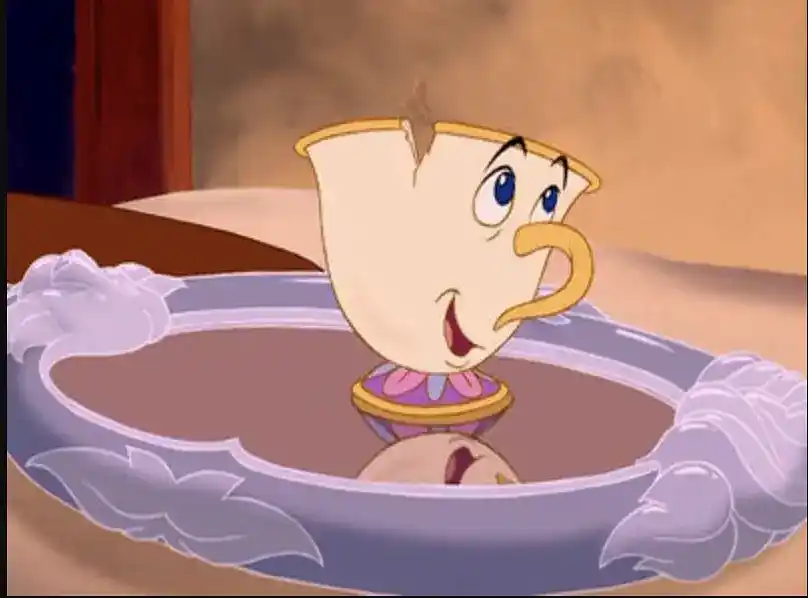
2. Balance figurative language with clarity
While figurative language is a powerful tool, not everything needs to be expressed this way. Instead, strive for a balance between figurative language and straightforward descriptions.
Doing this ensures that your language enhances the story without baffling your audience. It importantly also creates a more dynamic reading experience, slowing things down in sections where you want the reader to pay attention and going quickly through sections that are more informational and transitional.
Tip: When using figurative language, ask yourself whether this is a scene you want to emphasize — and if so, how. Is the message clear? If it distracts the reader from important information, consider using more literal language.
3. Use figurative language to mirror the theme
Figurative language can deepen the emotional resonance of your writing by connecting to broader themes. For instance, by linking a character’s emotional journey to a well-known symbol, you can make their internal struggles feel more significant and universal.
Conversely, if your figurative language is not anchored in the story, it may start to feel like unnecessary ornamentation — weighing your writing down.
Tip: Choose a symbol, metaphor, or any other type of figurative language that reflects your character or story’s emotional arc.
For instance, in a story about loss, you might use a wilting flower to represent a character’s grief. As this character heals, the flower might bloom again, symbolizing their recovery. This can add layers of meaning to both the emotion and the symbolism, helping you show — not tell — your character’s growth.
4. Avoid clichéd figurative language
As with any kind of writing, you want your prose (or poetry) to feel fresh and uniquely yours. Using figurative language, you can describe age-old experiences in completely new ways, putting your own spin on them.
Q: What are the most overused character clichés writers should avoid?
Suggested answer
Green eyes. And eyes that glow, that swirl, that change color, have flecks that dance, and can be seen from absurd distances. Fantasy books are full of this stuff. It gets tiresome. And while we're at it, does every feisty female have to have red hair?
Doreen is available to hire on Reedsy ⏺
To that end, don’t rely on overused and clichéd expressions — e.g., things like “she was as sweet as candy” or “he had a heart of gold.” Instead, strive for originality by coming up with new comparisons or ways to describe emotions.
Tip: Think about an image that best conveys the emotion or idea at hand. Steer clear of clichés:
❌ “She was as busy as a bee.”
And instead think more deeply about how to be accurate yet original:
✅ “Her fingers flew over the keyboard, her mind a whirlwind, as the email notification icon blazed red.”
Note how the second version relies more on showing than telling, evoking the feeling of business.
Q: How can writers use stereotypes and tropes to their benefit when creating a character?
Suggested answer
Well, stereotypes and tropes exist because they are the comfort food of readers, and should be the comfort food of writers too. Not to the extent that you write cliche stories by overusing the same old thing. But by the fact that their presence in certain story types is expected and even desired by fans of that story type, so to try and write without them can leave readers unsatisfied and the story feeling incomplete.
There are great books out there on this, John Truby in particular has a great one out. Knowing the stereotypes of a heroes journey, for example, gives you lots of options for side characters and supporting characters to help a hero on certain types of quests. The tropes are the expected encounters and obstacles that hero will encounter along the way.
If you start by mapping these out and identifying which are required (tropes most of all) and which work best for your story but are optional (stereotype characters) then you can take them and twist them in unique and interesting ways, even flip them around in timeline or approach in ways that make it clear they are there (and meet reader expectations and preferences) while still avoiding cliche expectation and creating interesting and unique characters, world, and stories that captivate readers.
Bryan thomas is available to hire on Reedsy ⏺
Trope = yes
Stereotype = no
A stereotype is an oversimplified view of a type of person, based on one aspect of their identity, like race or gender or hair color or where they're from. It's important to know stereotypes so you can avoid them in your writing, both so you won't be generic and so
Tropes, on the other hand, are like adding sugar to cake, rather than salt: You want to know what your audience came for, so you can give it to them!
Tropes are things with universal appeal that audiences come back for time and time again. (Not to be confused with a cliche, which is just something that has been overused until it's cringey. For instance, the villain in a YA novel being a mean blonde cheerleader is both a cliche and a stereotype. But a trope might be that the main character is an underdog who manages to win the heart of the most high-status boy in school!) Examples: enemies to lovers, amateur detective, chosen one, only one bed...
Intelligent use of proven tropes, combined in a new and unique way, are the fastest way to genre writing success!
Michelle is available to hire on Reedsy ⏺
A trope is something that is instantly familiar to readers: a character type, setting, plot point, or style of writing that is recognizable and tied to a specific genre.
For example, one familiar romance story structure is the “enemies to lovers” plot. This pattern is immediately recognizable to readers, and although it is used often, writers are still finding new and unique ways to spin it, and readers still love engaging with it.
Another popular trope is that of “The Chosen One.” Think about it: Both Luke Skywalker and King Arthur find a magical sword, receive the guidance of an older, wiser mentor, and go on a journey to storm a stronghold to save a princess. Even though the building blocks are the same, the stories are vastly and entirely different…and centuries apart!
There are hundreds of ways to apply this trope and come out with a unique and fresh story.
Tropes are the conventions, ideas, or motifs that make up these basic building blocks of all storytelling. In order to tell a fantastic story, tropes are necessary (and not to be confused with clichés, which are devices, expressions, or phrases that have been used so often and in so many places that readers have become tired of them, and desensitized to them). But why are they necessary?
Well, tropes are baked into every genre that we know and love. If you’re writing a western novel, odds are you might have a lone cowboy or a bumbling sheriff in there. If you’re writing a thriller or mystery novel, you might find yourself creating a gritty, lone-wolf detective, who acts first and asks questions later. Just because these tropes have been used before, doesn’t mean they’re tired!
If you’re writing in a specific genre, in order to use tropes effectively, you should be intimately familiar with the tropes of that genre. Knowing them inside and out means you’ll have your best shot at subverting them and spinning them in new ways that readers will enjoy (and avoid veering into cliché territory).
Think of books in the genre that you’ve read before. Was there one that you didn’t like? Ask yourself: What specifically made you dislike it? It might be that a trope wasn't used effectively, and if you can identify exactly what disappointed you about the way that trope was used, it can help you discover what you wished that writer might have done differently. And then: poof! Suddenly you have a thread of inspiration you can pull on to get some ideas for your own story.
Remember: tropes are patterns. And patterns can be twisted, bent, and manipulated. Just be careful not to break the pattern, or you risk readers finding it difficult to relate to a trope they cannot recognize and therefore relate to.
Writers just like you are still finding fresh ways to put a spin on tropes of all kinds, and using those building blocks to build entirely new and unexpected things for us to read!
Lesley-anne is available to hire on Reedsy ⏺
When it comes to building characters, tropes and stereotypes get trashed. Authors shy away from them, not wanting their stories to sound stale because they're leaning on well-worn tropes. But applied sparingly, these storytelling crutches can enrich your characters, allow readers to jump in easily, and even lay the foundation for surprise and depth.
Tropes are a short-cut for your readers. They give readers a feeling of who a character is and where they stand in the story. A "mentor," for instance, gives a feeling of guidance, a "reluctant hero" gives a feeling of inner conflict, and a "grizzled detective" gives a sense of experience and exhaustion. These archetypes shave space out of your storytelling so readers can catch on to relationships and dynamics immediately. The art is to combine them with unique characteristics that make your character stand out.
Stereotypes are worse. They can establish context rapidly, but they can also be lazy or toxic if they are not challenged. The trick is to use them as a springboard, and not an endpoint. A character who holds the "shy bookworm" description might secretly be a social master manipulator. That interplay between expectation and reality keeps things interesting and provides depth.
Another great way to use tropes is to subvert expectations. Use a "princess in distress" who saves herself or a "charming rogue" who has imposter syndrome. By turning the expected tropes on their head, you catch the reader off guard without losing respect for those conventions.
Ultimately, the most compelling characters are born from layers beyond the trope. Surface traits like charm, wit, or wisdom draw people in, but motivation, flaw, and contradiction create a character. Tropes will also support your themes—whatever they may be, from redemption to generational insight to ambition's cost—adding cohesiveness to your narrative but still permitting complexity.
The issue happens when writers rely on tropes or stereotypes without questioning them. Does every single one serve the story, add depth, and make your character more human? Used consciously, tropes and stereotypes are not clichés—they are tools used to make your characters immediately recognizable, resonant at a thematic level, and unforgettable.
John is available to hire on Reedsy ⏺
While it's worth noting the use of tropes and stereotypes can be comforting -- I love an enemies-to-lovers, "Who did this to you?" trope in romance, and the Chosen One in young adult makes me nostalgic for the golden age of dystopian; however, you can also use stereotypes and tropes by subverting them.
A great example is Victoria Aveyard's RED QUEEN. I won't reveal the twist, but it took a certain romantic stereotype, crushed it to pieces, and surprised readers in a way that still gives me (delightful) trauma! Another more general example is the Game of Thrones series and the way that George RR Martin kills characters off left and right. Those you thought were heroes or "chosen" are not guaranteed to be around long enough to fulfill any destiny.
So by all means, embrace tropes and stereotypes to give readers what they want; however, think about surprising them a little bit. See how you can tell a different story.
Grace is available to hire on Reedsy ⏺
There is a common misconception within writing circles that "trope" = bad or cliche. While yes, certain tropes and character traits can become overused and cliche, tropes are more like reader expectations when they pick up a book from a certain genre. For instance:
- In romance, tropes are things like friends to lovers, enemies-to-lovers, he falls first, grumpy neighbor
- In YA fantasy, tropes can be things like the Chosen One, Love Triangles, or Hidden Magic
- In middle grade, tropes can be the power of friendship, magical animals, magical academies
While not all books in these genres include all of these things, and while these things can certainly be cliche if you don't put your unique take on it, they are what readers enjoy about a genre. After all, isn't that why you read a certain genre, because there are tropes and elements within that you enjoy?
The way to use these stereotypes and tropes to your benefit is to use them as a framework, understanding how they operate and why readers enjoy them. Then, sprinkle your unique author magic on them. How you describe characters, the dynamic between two characters, how certain elements show up or are utilized, all these can be unique to you and your book. You're not looking to reinvent the wheel, but rather give it a new coat of paint, your coat of paint, so that you write the story you want while delivering a satisfying reader experience.
Sean is available to hire on Reedsy ⏺
5. Match figurative language to tone
Figurative language is most effective when it fits seamlessly into your writing, matching tone and mood across the board.
So this might sound obvious, but if you’re writing a tragic scene, you don’t want to use a humorous simile that breaks the mood. Likewise, you don’t want to use a somber metaphor when you’re trying to write a lighthearted scene.
Tip: Plot out the emotional arc of your story and the intended impact of key scenes, then adapt your figurative language accordingly. Ask yourself if the figurative language matches how the narrator would really perceive their environment and the feeling you want your readers to have.
Want help polishing your figurative language? Consider hiring a professional copy editor:
Hire an expert
Paul H.
Available to hire
I have a PhD in philosophy and two decades' experience in editing humanities manuscripts for university presses and independent authors!
Eric H.
Available to hire
AP-trained copy editor now editing and proofreading for newsletters, university-affiliated authors, and of course my fab Reedsy clients!
Sirah J.
Available to hire
Careful inspections, thorough explanations, and considerate guidance for inclusive picture books and middle grade novels.
Figurative language is an absolutely vital part of creative writing. Instead of painting by numbers, it helps authors draw a world from scratch, freehanding the outline and mixing together a whole new color palette. With these types, tips, and examples of figurative language in your arsenal, we hope you enjoy mixing up your own!

